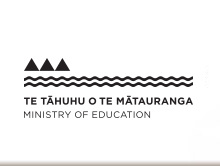Ōku Ringaringa
nā Rona Lawson
He Whakarāpopototanga
Kei te whakawai ngā tamariki i ngā mahi ā-ringa mō te waiata.
Summary
These children are practising hand actions.
| Te momo reo tuhi Language style |
|
|---|---|
| Ētahi āhuatanga o tēnei momo reo tuhi Features of this language style |
|
I te Ākonga e Pānui Ana
During Reading
Titiro ki te uhi o mua:
1. Kei te aha ngā kiripuaki i tēnei whakaahua?
2. Pānuitia te taitara. He aha te hononga i waenganui i te taitara me te whakaahua?
Look at the cover of the book:
1. What are the characters on the cover doing?
2. Read the title. What do the title and the picture on the cover tell us about the book?
Titiro ki ngā whārangi 2–5:
1. He aha ngā mahi a ngā tamariki i ēnei whakaahua?
2. E hia ngā mahi ā-ringa i roto tonu i te pukapuka?
Look at pages 2–5:
1. What are the children doing in these pictures?
2. How many actions do you see in the book?
Titiro ki ngā whārangi 6 me 7:
1. He aha ngā mahi a ngā tamariki i roto i ngā whakaahua?
2. E pēhea ana te āhua o ngā tamariki ināianei?
3. Ki ōu whakaaro, he aha i pērā ai ō rātau āhua?
Look at pages 6 and 7:
1. What are the children doing in the pictures?
2. How do you think the children are feeling?
3. Why do you think they are feeling like this?
Titiro ki te whārangi 8:
1. Honoa te whakaahua tika ki te kupu tika.
2. He aha koe i whakaaro ai koinei te hononga tika?
Look at page 8:
1. Link the correct picture with the correct text.
2. Why do you think that this picture and text go together?
I Muri i te Pānui Pukapuka
After Reading
Te Whakahihiko Hinengaro
He ngohe ēnei e pā ana ki ngā kōrero i roto i ngā pukapuka katoa, arā, Ko Wai te Toa?, Kia Tūpato Marama!, Poutoti, me Ōku Ringaringa. Ka taea e te pouako ēnei te whakamahi kia tutuki ngā whāinga whakaako me ngā whāinga ako. Mā te pouako ēnei ngohe e whakahāngai ki ngā whāinga ako me ngā hiahia o ngā ākonga.
Ia rā waiatahia te waiata Te Arapū Māori. Hoatu he kāri arapū ki ngā tamariki, mā rātou e whakaraupapa ā-arapū mai. Hei āwhina, ka whai pea i te raupapa o tētahi arapū kua tuhia ki te papatuhituhi, kua whakairihia rānei ki te pakitara.
Prompting Ideas
These are some ideas for learning which may be used in connection with the books Ko Wai te Toa?, Kia Tūpato Marama!, Poutoti, and Ōku Ringaringa, that pouako can use to help achieve their teaching purposes. These ideas can be adapted as required to suit the learning objectives and needs of the students.
Practise the song Te Arapū Māori. Give the students a set of alphabet cards to sort into alphabetical order. To help them, they could follow the alphabet written on the board or have an alphabet frieze on the wall.
Anei ētahi mahi hei āwhina i ngā ākonga kia mārama haere ki ngā ariā o te pukapuka.
1. Whakaritea mai he wā i ia ata hei whakaharatau i ngā tohutohu mai i te pukapuka. Mahia kia mau rā anō i ngā ākonga ngā momo reo tuhi.
2. Mahi takirua. Ka pānuitia mai anō te pukapuka mā te whakamahi i ngā karetao hei whakawai i ngā kōrero o te pukapuka.
3. Tāruatia te kōrero me ngā whakaahua ki runga kāri. Kutia, kia noho motuhake te kōrero me te whakaahua. Ko tā te ākonga mahi, he hono i te kōrero tika ki te whakaahua tika.
3. Ka tā pikitia ngā ākonga mō tētahi wāhanga o te pukapuka, kātahi ka kōrero mō taua pikitia. Mā te kaiako te kōrero a te ākonga e tuhi ki runga i tana pikitia.
Here are some activities which may help students learn the concepts in the book.
1. Organise a time each morning to practise the actions from the book. Practise until they have learned all the language features.
2. Work in pairs. Students re-read the text using puppets to practise the language used in the book.
3. Photocopy the text and pictures on to card. Cut these so that the text and pictures are separate. Students match up the correct text with the correct pictures.
4. Students draw a picture about a part of the book, and then talk about their picture. The teacher then writes what the student has said on his/her picture.






